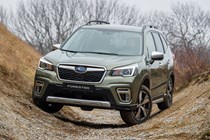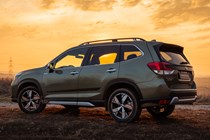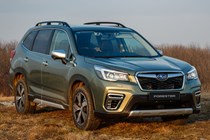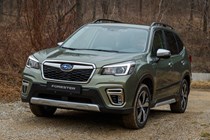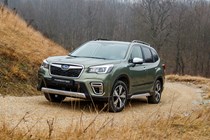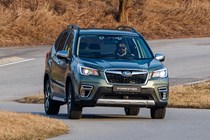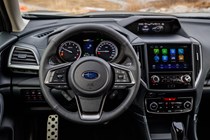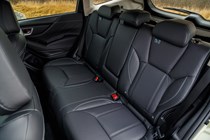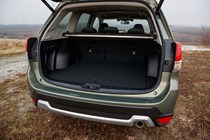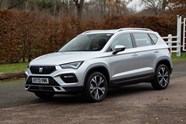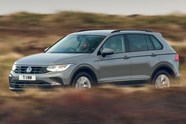
Subaru Forester review
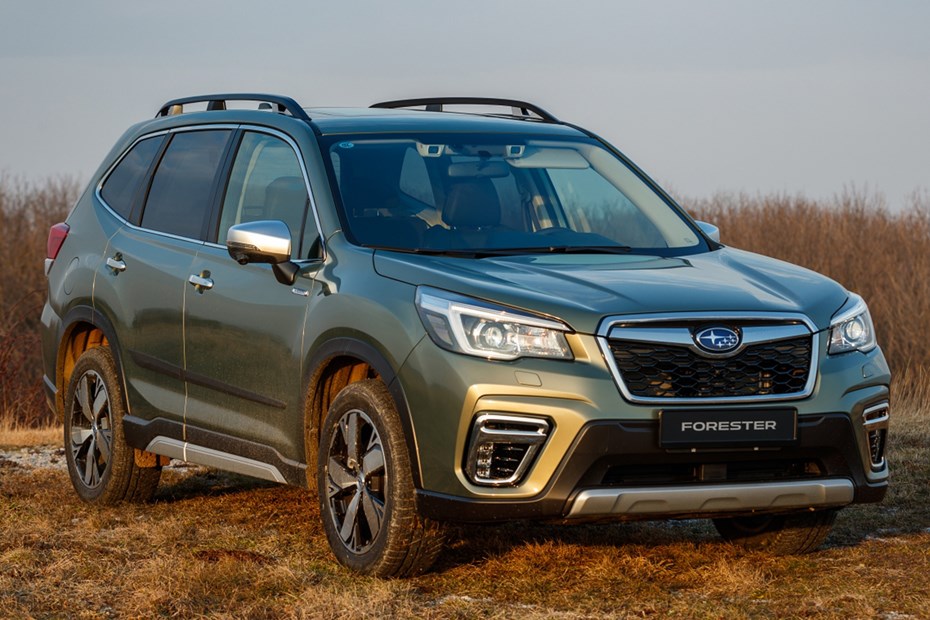
At a glance
| Price new | £36,960 - £39,960 |
|---|---|
| Used prices | £16,005 - £31,801 |
| Road tax cost | £180 |
| Insurance group | 16 - 23 |
Get an insurance quote with

|
|
| Fuel economy | 34.7 mpg |
| Miles per pound | 5.1 |
| View full specs for a specific version | |
Available fuel types
Hybrid
Pros & cons
- Four-wheel drive
- Loads of standard equipment
- Spacious interior
- Intrusive safety technology
- Dim-witted CVT automatic
- Poor fuel economy
Subaru Forester rivals
Overview
Subaru has always been a bit of a left-field choice – and the latest Forester is no exception. It’s a quirky family SUV with an unusual 2.0-litre petrol-hybrid boxer engine, rugged styling, standard four-wheel drive and more safety equipment than a traffic officer’s store cupboard.
It has broad range of mainstream rivals, such as the Volkswagen Tiguan, SEAT Ateca, Mazda CX-5, Citroen C5 Aircross, Kia Sportage and Skoda Karoq, all of which are great cars in their own right. The question is, what can the Subaru Forester offer that you can’t get from the established competition?
Buyers used to flock to Subaru for its unusual styling, interesting engines and rally-proven four-wheel drive systems. But, now that we’re marching towards the electric era, rowdy petrol engines are a lot less relevant – and there are cheaper (and equally interesting) off-roaders out there such as the Dacia Duster and Suzuki Jimny.
Sadly, tightening CO2 emissions regulations and more stringent safety requirements have eroded Subaru’s brand identity. We’re not sure there’s enough of it left in the latest Forester to even appeal to the firm’s die-hard fanbase – let alone the casual buyer, who will probably be better served by the Forester’s key German, Japanese and South Korean rivals. Read on for our verdict.
What’s it like inside?
Pretty middle-of-the-road. We’ll start with the positives. The seats are well-shaped and supportive, and they offer lots of adjustment. There’s plenty of adjustment in the steering column, too, which means any driver should be able to comfortable.
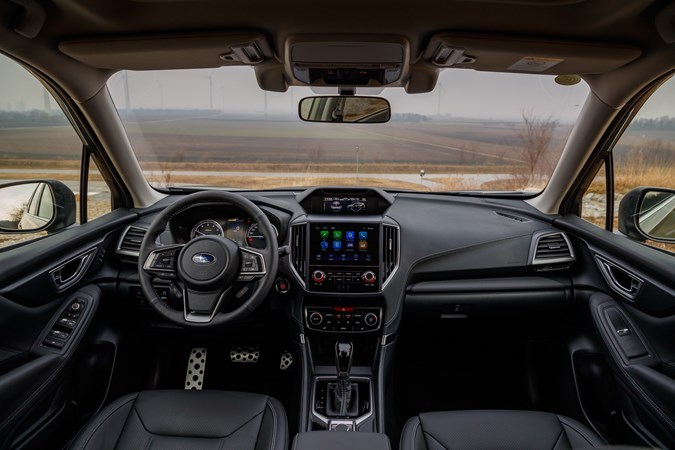
Space in the back is good. There’s room for two adults to stretch out, even with a six-foot driver at the helm. Material quality isn’t as good as you’ll find in the Mazda CX-5 – one of our testers reported headaches induced by smell of the adhesives used to hold the cabin together. However, the issue seems to wane as the miles roll by and the vapours wear off.
We like the infotainment system. It’s an 8.0-inch unit, which is sharp and responsive. Android Auto pairs quickly to the screen, too, which is all most drivers want these days anyway. However, we’re not sure the dashboard needs the extra 6.3-inch display on top. It mainly displays the energy flow of the hybrid system and is somewhat of a distraction on the road.
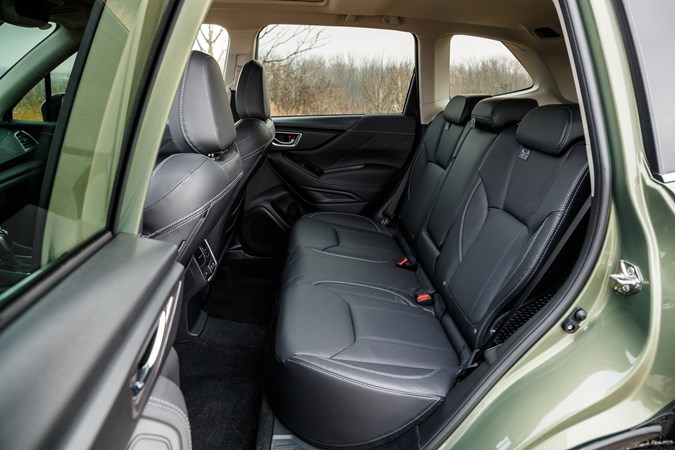
Boot space is competitive for the class. The Forester offers 509 litres with the rear seats in place, which is 24 litres more than you get in a four-wheel drive SEAT Ateca. The wheel arches eat into the space a little and the luggage cover is quite low rent, but there’s no lip between the top of the rear bumper and the boot floor. That latter point makes loading heavy items easy.
What’s it like to drive?
Not that fun – and Subaru’s 2.0-litre four-cylinder petrol-hybrid e-Boxer engine should shoulder some of the blame. It isn’t as fast or as aurally pleasing as the non-electrically assisted boxer engines used in older Imprezas and Foresters, producing a rather meagre 150hp and 196Nm of torque. It’s both breathless and brash at full throttle, and the 0–62mph time is a pedestrian 11.8 seconds.
You can change the engine’s character by pushing the S/I button on the steering wheel, which sharpens up the throttle response slightly. The amount of power the engine produces stays the same – it just reacts more readily to your throttle inputs.
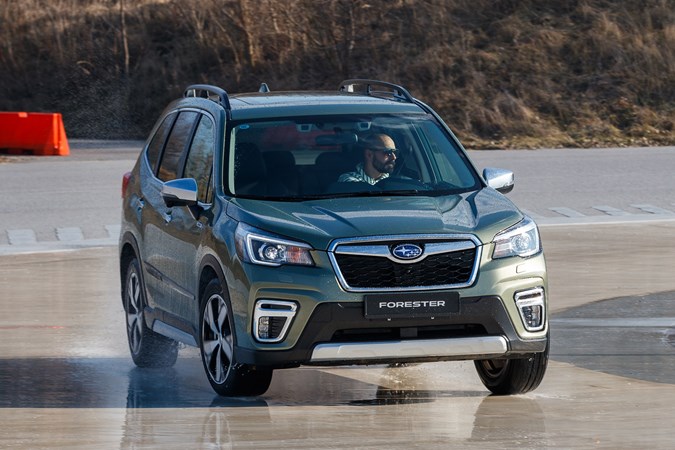
‘But wait,’ we hear you say. ‘It’s a hybrid, so the fuel economy must make up for that right?’ Sadly, that isn’t the case. We averaged around 35mpg during our time with the Forester hybrid. That’s better than the old non-electrically assisted Forester, but eons behind the 50mpg you can average in the similarly sized Ford Kuga hybrid. Even a non-electrically assisted SEAT Ateca 1.5-litre petrol can manage 40mpg.
And it gets worse. Subaru has discontinued its six-speed manual gearbox for the latest Forester. Now, your only choice is a CVT – and it really doesn’t suit the engine. Because the engine makes so little torque down low, the CVT spikes the revs past 4,000rpm if you so much as look at the throttle. That extracts the best performance, but it’s noisy and bad for fuel economy.
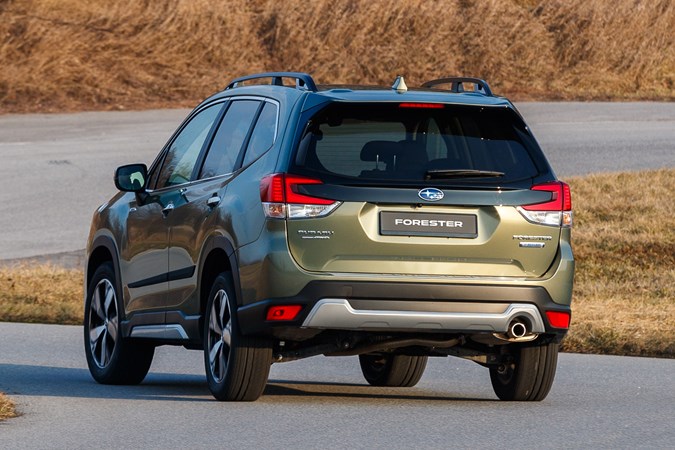
Subaru’s CVT is also challenging to use on the motorway. As you’re driving along, the engine revs are constantly changing as the CVT tries to eke out the best fuel economy – and that makes it difficult to maintain a constant speed.
Picture the scene. You’ve joined the motorway and accelerated up to 70mph. You hear the engine speed up, assume you’ve accidentally accelerated and back off the throttle to maintain what you think is a constant 70mph. But, when you look down at the dashboard, you realise you’re barely doing 60mph and the increase in engine speed was just the CVT searching for 0.5 of an mpg over the slight hill you’ve just crested.
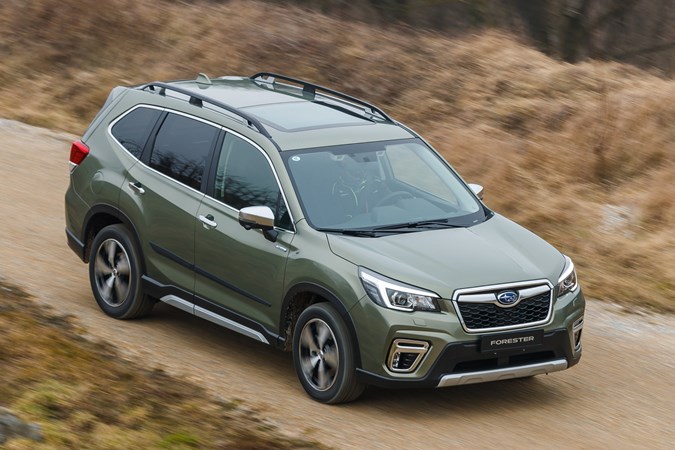
We weren’t impressed by the Forester’s steering, either. It’s too twitchy, which makes it difficult to maintain the car’s position on the road. It feels a bit like one of those rear-steering forklift trucks – a tiny tickle at the steering wheel produces an enormous reaction from the steering rack, which will take some time to get used to.
Subaru’s four-wheel drive system is very sure-footed, though, even in torrential conditions. The suspension also strikes a keen balance between comfort and handling. There’s a bit of body roll in the corners (which is to be expected from an SUV), but it doesn’t often get overwhelmed by sharp bumps. It also has enough ground clearance to work well off-road.
Safety
The latest Forester has an extensive roster of safety equipment. When the car was launched in 2018, the list included lane-keeping assist, blind-spot monitoring, pre-collision braking and even a function that warns you when the car ahead in a traffic jam has moved away. Just in case you aren’t paying attention (which you should be anyway).
However, Subaru added an extra three features for the car’s update in 2022. These were autonomous emergency steering, adaptive cruise control with lane centring and a fancy new lane departure prevention system that can recognise things like grass verges and road edges.
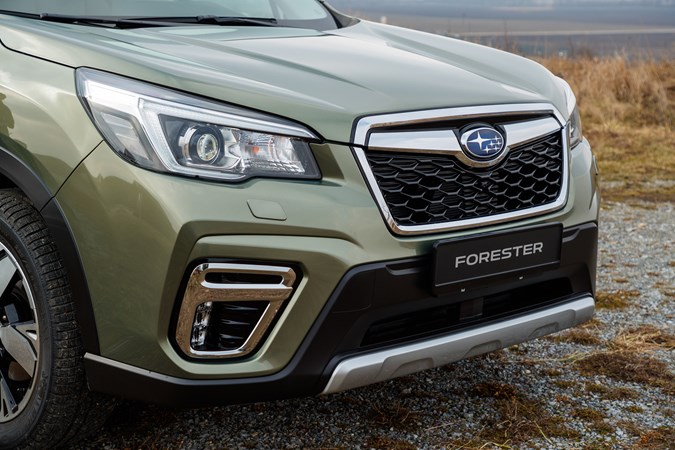
This list of kit looks very impressive, but it doesn’t always work seamlessly. We already mentioned our issues with the Forester’s steering, but the problems are compounded by the overly sensitive (and slightly crude) lane-keeping assist system and the new lane departure prevention system.
Both systems are too eager to push the car away from the white lines. Even if you get close to the lane dividers, there’s an irritating buzzer that sounds accompanied by a light show on the head-up display and gauge cluster. It’s also too keen to keep the car a set distance between the lines, which means you’re constantly fighting the system, always making corrections to counteract the adjustments of the safety tech. It makes the Forester tiring to drive on the motorway.
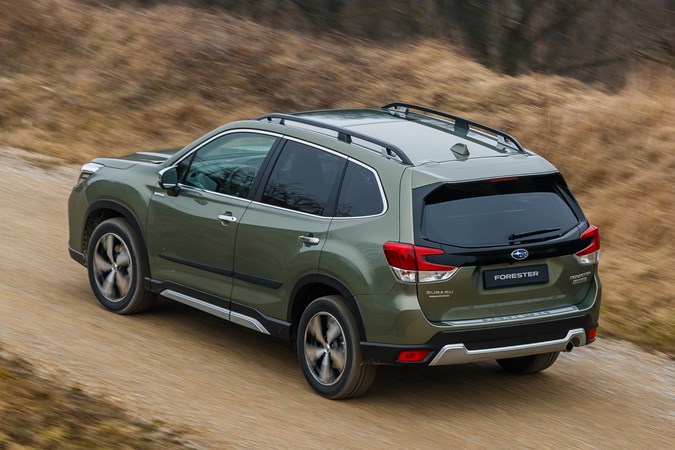
Subaru has also designed a driver monitoring system that tracks your eye movements for signs of distraction or fatigue and issues a warning on the dashboard if you take your eyes off the road for too long. It’s not very clever, though – for example, if you tilt your head to the side to scratch your neck, the sensors can lose sight of your eyes. Then, the dashboard will chime like a fairground ride and light up like Christmas tree. The same thing happens if you look in the door mirror for too long.
In all, it’s a very ambitious effort from Subaru – and we can understand why the firm’s engineers went to such great lengths. Over the past decade, Euro NCAP has placed greater importance on the level of standard safety equipment cars come with. The more equipment, the higher the score.
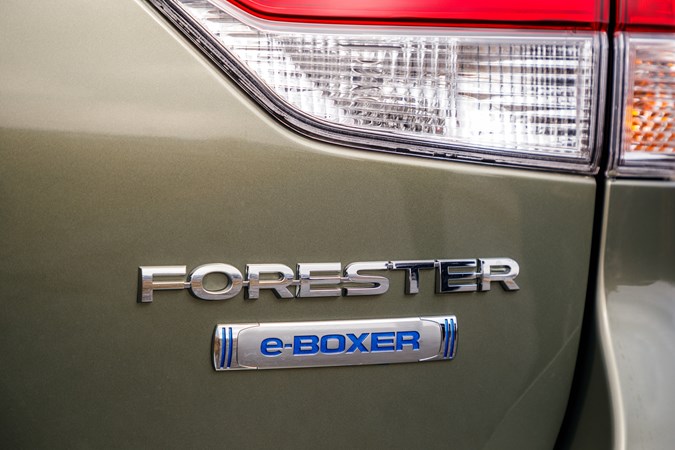
The Forester has lots of safety equipment, which helped to earn it a five-star safety rating in 2019. And it’s probably a very safe vehicle if you rely on the systems as much as possible – but they get very annoying very quickly if you try to take an active role in driving the car.
Now click through to the next page to read our overall verdict on the Subaru Forester. We’ll give you a round-up of the car’s ability and let you know whether it’s worth spending money on.



